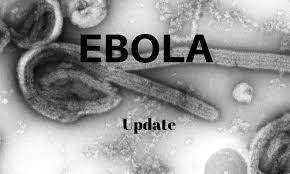
EMA’s human medicines committee (CHMP) has recommended granting a marketing authorisation in the European Union for a new Ebola vaccine that provides active immunisation to prevent Ebola virus disease (Zaire ebolavirus species) in individuals aged 1 year and older.
Ebola virus disease is a rare but severe and often fatal illness. Between 25% to 90% of the patients who contracted the disease died in past outbreaks. The largest outbreak to date occurred in West Africa in 2014-2016 with more than 11,000 deaths. Currently, the Democratic Republic of Congo (DRC) is fighting an Ebola epidemic. It was declared a public health emergency of international concern by the World Health Organization (WHO) in July 2019. So far, more than 3,400 people in DRC have been infected with the Ebola virus during the ongoing outbreak, and approximately 67% of those infected have died.
The recommendation to grant a marketing authorisation for the new vaccine follows the approval of the first Ebola vaccine in November 2019. The new Ebola vaccine consists of two components, Zabdeno (Ad26.ZEBOV) and Mvabea (MVA-BN-Filo). Zabdeno is given first and Mvabea is administered approximately eight weeks later as a booster. This prophylactic 2-dose regimen is therefore not suitable for an outbreak response where immediate protection is necessary. As a precautionary measure, a Zabdeno booster vaccination should be considered for individuals at imminent risk of exposure to Ebola virus, for example healthcare professionals and those living in or visiting areas with an ongoing Ebola virus disease outbreak, who completed the Zabdeno, Mvabea 2-dose primary vaccination regimen more than four months ago.
The ability to make the immune system respond to the virus after vaccination with Zabdeno and Mvabea was studied in a total of 3,367 adults, adolescents and children who participated in five clinical studies conducted in Europe, Africa and the USA. These studies demonstrated that the vaccine regimen is safe and could induce an immune response against Ebola virus. Efficacy data in humans has been extrapolated from animal studies. The exact level of protection provided by the vaccine regimen is however unknown.
The most common side effects found in participants in the clinical trials were injection-site reactions (pain, warmth and swelling), fatigue, headache, myalgia, arthralgia and chills.
Effectiveness data are being collected through an ongoing observational study in DRC. The results of this and other studies must be included in post-marketing safety reports which are continuously reviewed by EMA.
As protection against Ebola virus disease is considered to be of major public health interest, Zabdeno and Mvabea were evaluated under EMA's accelerated assessment mechanism, a tool which aims to speed up patients' access to new medicines if there is an unmet medical need.
Currently, there are no therapies approved for Ebola. EMA is working together with regulatory authorities around the world to support WHO and to advise on possible pathways for the development, evaluation and approval of medicines and vaccines to fight Ebola.
Zabdeno and Mvabea received a positive opinion for marketing authorisations under exceptional circumstances because the applicant was able to demonstrate that it is not possible to conduct a randomised controlled study that might generate comprehensive clinical data on the efficacy of the new Ebola vaccine even after authorisation. This was considered acceptable in light of the ongoing Ebola outbreak and high mortality rates in DRC.
The opinion adopted by the CHMP is an intermediary step on Zabdeno and Mvabea’s path to patient access. The CHMP opinion will now be sent to the European Commission for the adoption of a decision on an EU-wide marketing authorisation. Once marketing authorisation has been granted, decisions about price and reimbursement will take place at the level of each Member State taking into account the potential role/use of the new Ebola vaccine in the context of the national health system of that country.
Notes
The applicant for both Zabdeno and Mvabea is Janssen-Cilag International N.V.
A dose of Zabdeno vaccine should be administered as the first vaccination.
A dose of Mvabea vaccine should be administered as the second vaccination approximately eight weeks after the first vaccination with Zabdeno.
Contact point
EMA press office
Tel. +31 (0)88 781 8427
E-mail: press@ema.europa.eu
Follow us on Twitter @EMA_News






